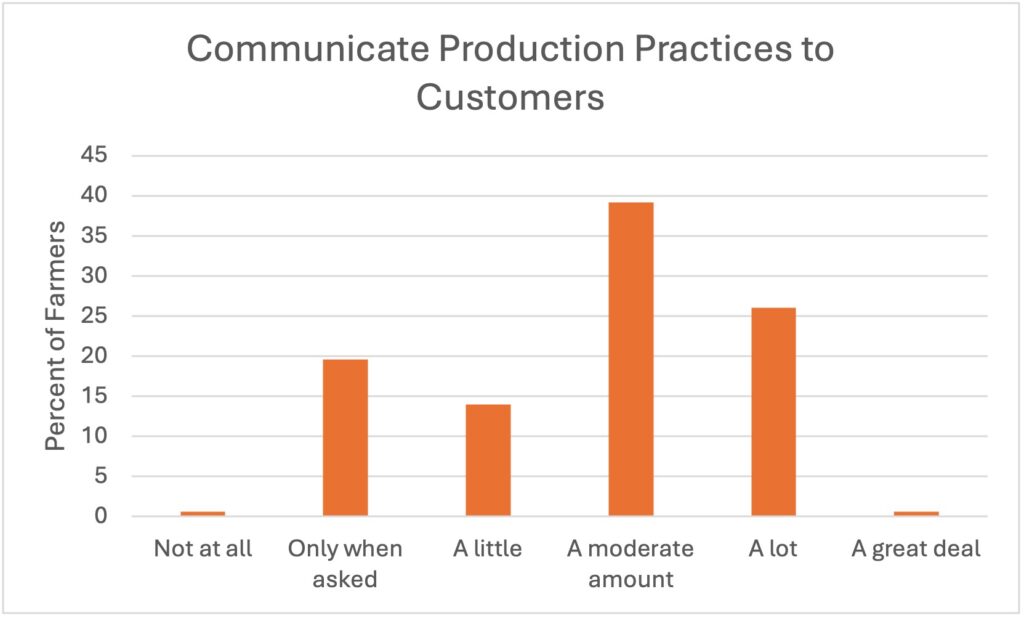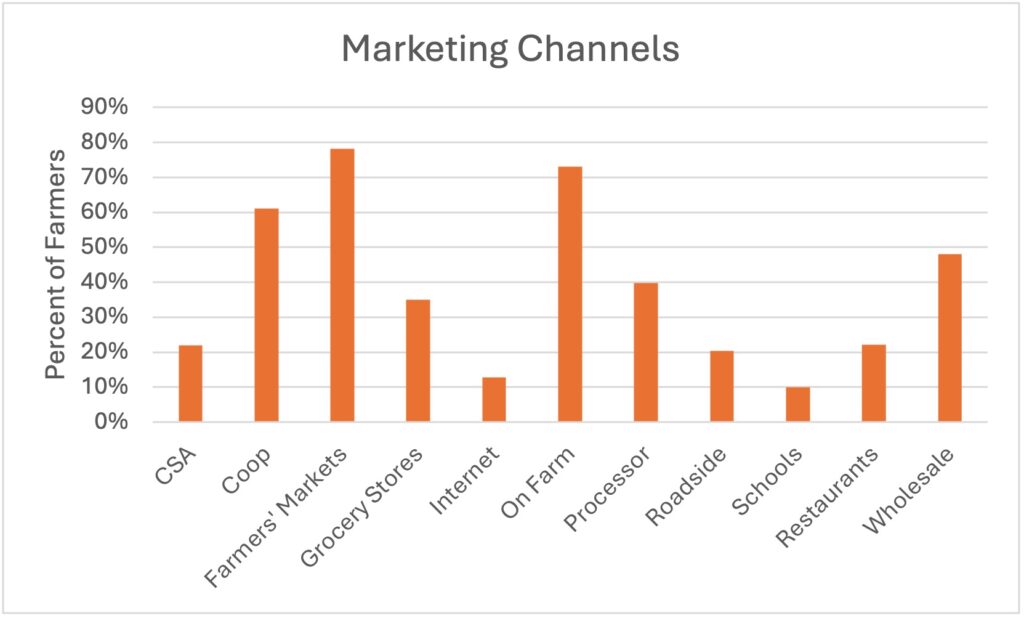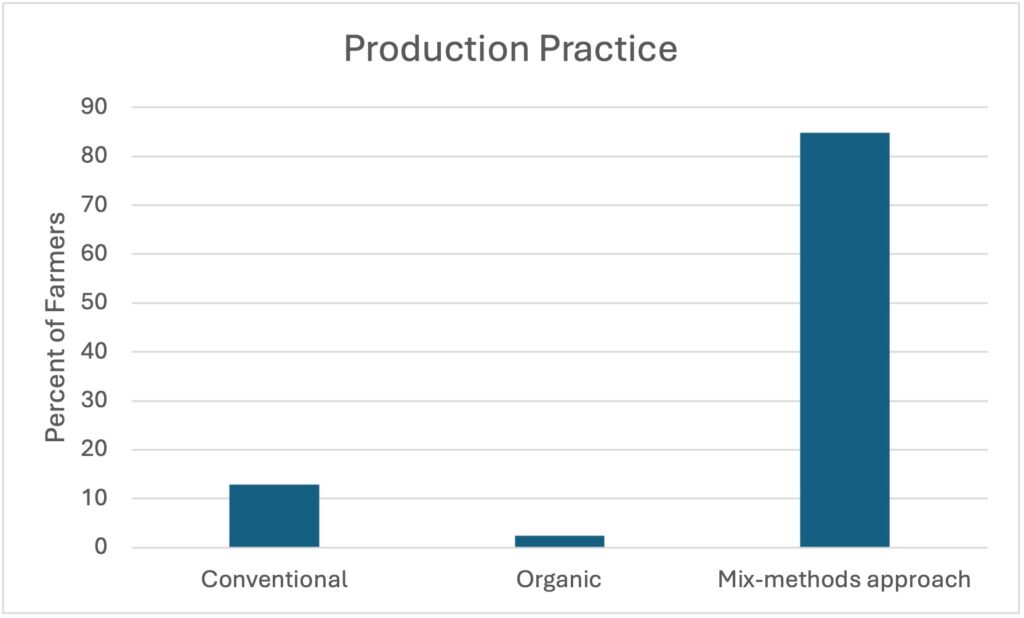Small and medium-sized vegetable farms face unique challenges balancing profitability with sustainable production practices and food safety requirements. To better understand how these farmers navigate complex decision-making processes, the Soil to Market Team—comprising Maria Marshall, Renee Wiatt, Petrus Langenhoven, Betty Feng, and Nathan Shoaf—conducted a comprehensive survey of 500 small and medium-sized farmers across the United States during 2024-2025. This research, funded by the U.S. Department of Agriculture’s National Institute of Food and Agriculture, focuses on holistic farmer decision-making processes.
This article series will present key findings from the survey, offering insights that can help both growers and Extension educators better understand the interconnected nature of farm planning. These findings aim to support more profitable and sustainable vegetable farming operations by examining the relationship between strategic planning and farm performance.
Mixed Messages: Why Small Farmers Choose Pragmatism Over Marketing
We tend to think of small and medium-sized farm owners as direct to consumer marketers. With that, we assume that these farm owners have loyal customers that buy from them because they trust how these farmers produce goods. In fact, research has shown that being local can trump organic labeling in price premiums because of local farmers’ connection to their customers. Yet, our survey indicates that farmers may not be keen on discussing the details of their production practices with their customers. We asked farmers how often they communicate their production practices with customers and 66% stated that they communicated at least a moderate amount (shown in Figure 1). Fourteen percent reported that they discuss production practices a little and 20% stated only when asked. This is interesting because 76% of farmers believed that food safety was important to their customers and 38% believed that their production system was important to their customers. Our results show that there is a disconnect between what farmers believe customers value and what they choose to highlight to customers.
Considering that most farmers in our survey sold directly to consumers, this lack of communication with customers is surprising. As shown in Figure 2, the majority of farmers sold their products at farmers’ markets, followed by on-farm sales and cooperatives. The answers were not mutually exclusive, and most farmers sold their products through four different channels. The average distance to market was 23 miles. The longest distance to market averaged 49 miles, with some traveling as little as 12 miles and some as long as 110 miles.
Barriers to Market
Examining barriers that farmers face to markets, the most severe barriers were disease pressures and lack of reliable labor (Figure 3). The top five barriers to market were high disease and weed control costs, lack of processing facilities, fertility issues, and high labor and fertilizer costs. Most farmers did not consider insects or high seed costs to be barriers to market.
Interestingly, if farmers did not have to worry about their market, they would choose to use a mixed-methods approach to farming (Figure 4). Only 2.4% would choose organic and 12.8% would choose conventional.
Conclusion
While we often romanticize direct-to-consumer agriculture as built on intimate connections where farmers share their production stories with engaged customers, the data suggests a more pragmatic reality. Despite selling primarily through farmers’ markets and direct channels, many farmers limit their communication about production practices to only moderate levels or when specifically asked, even though they recognize that customers care about food safety and production methods. This communication gap may reflect farmers’ focus on the practical challenges they face – disease pressures, labor shortages, and high input costs dominate their concerns rather than marketing narratives. Perhaps most tellingly, when freed from market pressures, the vast majority of farmers would choose mixed-method approaches rather than committing to purely organic or conventional systems, suggesting they prioritize agricultural pragmatism over marketing categories. This indicates that successful farmer-customer relationships may be built more on trust, proximity, and product quality than on detailed production transparency, and that farmers’ primary focus remains on overcoming the substantial operational barriers that threaten their ability to bring products to market at all.
Funding Acknowledgement
This work is supported by the Agriculture Food Research Initiative-Small and Medium Sized Farms Program, project award no. 2021-68006-33893, from the U.S. Department of Agriculture’s National Institute of Food and Agriculture.
Any opinions, findings, conclusions, or recommendations expressed in this publication are those of the author(s) and should not be construed to represent any official USDA or U.S. Government determination or policy.




